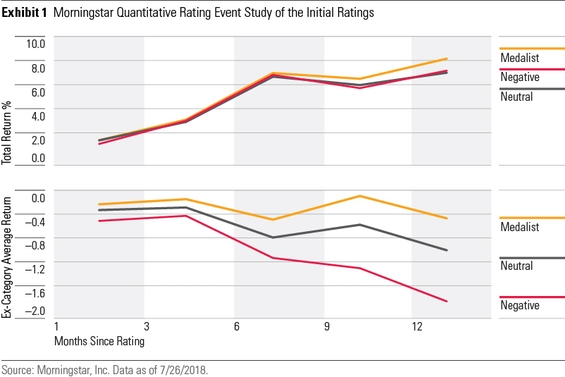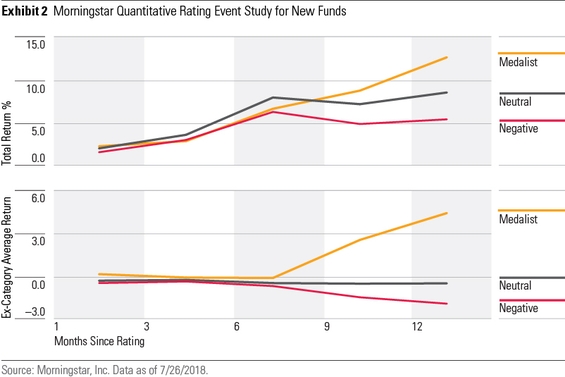The Morningstar Quantitative Rating TM helps provide investors with even broader fund coverage, so they can evaluate their investments through multiple lenses to reach their financial goals. We first introduced this rating last June, with a limited release in Morningstar Direct ℠.
Since the Quantitative Rating’s initial launch in the U.S., we’ve rolled it out in Europe, the Middle East, Africa, and South Korea markets.
Now, with a year behind the rating, we wanted to revisit how its original assessments have measured up.
What is the Morningstar Quantitative Rating?
The Quantitative Rating is powered by a machine-learning model and is based on research and data used by our analysts. This rating is an extension of the Morningstar Analyst Rating TM for funds, which provides an analyst's forward-looking assessment of a fund's ability to outperform its peer group or a relevant benchmark on a risk-adjusted basis over a full market cycle.
How has the Morningstar Quantitative Rating performed?
We’re pleased to see that the Morningstar Quantitative Rating works. In the graphs below, we show the performance of the June 2017 U.S. ratings. (Note: Due to small sample size of the recommended ratings, we combined the Gold, Silver, and Bronze ratings categories into the Morningstar Medalist group.)
This group of recommended ratings clearly outperformed the group rated as Neutral and Negative, showing 12-month cumulative returns of 8.38% compared to returns over the same period from the Negative group of 7.44%. When we adjust for style and risk, we see an even more pronounced separation between funds rated as Negative, Neutral, or a Medalist.

How do these fund performance ratings help investors?
Morningstar now provides a forward-looking assessment on funds after one month of history. Investors no longer need to wait for a fund to rack up a three-year track record to earn a Morningstar Rating TM for funds ( often called the star rating) or accumulate enough assets to warrant attention. We provide an objective measure almost immediately upon launch.
To look at the success of the measure, we examined the performance of the initial June 2017 ratings on U.S. funds less than a year old. The graphs below show that even with essentially no performance information, the Quantitative Rating is still able to select above- and below-average funds.

In the absence of performance history, the ratings are driven almost entirely by the Price and Parent Pillars. This tends to skew the ratings toward Neutral. However, there continues to be a small subset of funds receiving Medalist (Negative) ratings that prove to over (under) perform.
Obviously, the Quantitative Rating will give better recommendations when it has more data. But it’s encouraging to see that even in the absence of performance information the system still works well on average.
What Morningstar Category is best for active or passive management?
By extending the Analyst Rating with the Quantitative Rating, Morningstar now provides a complete set of forward-looking ratings for every fund in each category. As a result, investors can evaluate whether the Morningstar Category is best-suited for active or passive management by looking at the difference between the average rating for each type.
Below, we sorted categories on the difference in average rating and list the top 10 categories for active and passive funds.

Under the best active list, we see bank loan’s active fund rating is on average 1.09 notches higher than the average passive fund. This is not surprising because the category contains fixed-income securities, which are generally illiquid, giving active managers an opportunity to beat an index. Several of the spots on the top active list are occupied by international funds, aligning with the commonly held view that active management is a better bet overseas due to the large amount of securities and unique political circumstances in each country.
Under the best passive list, the sector-specific categories of consumer defensive, communications, consumer cyclical, and natural resources all fall in the top 10. Active managers do not have the same leg up when they're constrained to investing in securities of a particular sector.
This blog post is adapted from research that was originally published in Morningstar Direct’s Research Portal . If you’re a user, you have access . If not, take a free trial .

